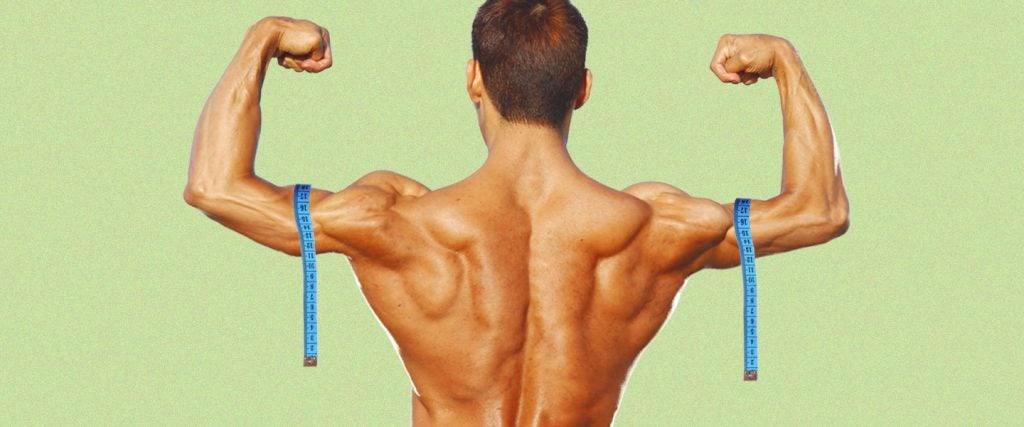When I was in second grade, I could already recognize that a double-bicep flex was precisely what someone was requesting of me when they said, “Flex your muscles!” No one ever asked me to do the same with my quads, or more embarrassingly, my perpetually puny calves. That’s because since at least the era of Charles Atlas (circa 1922), the double bicep has been the de facto flexing standard for displays of musculature.
The best modern example would be Hulk Hogan, who during his promos, would prattle on about the massive 24-inch pythons that dangled from his shoulders:
How legitimate was Hogan’s 24-inch python claim? On the surface, there isn’t much reason to doubt it. On the one hand, we might question the veracity of a 24-inch measurement taken on a WWF studio set in 1985, but when a non-biased measurement from the Rachael Ray Show 23 years later turns up a 20-inch measurement on a 55-year-old Hulkster, the original 24-inch measurement becomes far more credible. After all, we’re talking about a guy whose muscular arms stood out in an era where half of the wrestlers injected steroids as if their careers depended on it (because they did).
Not all of us are physically gifted enough (or chemically enhanced enough) to define a decade’s physical aesthetic. Nonetheless, if we set the biggest icon in wrestling aside for a moment, what is a realistic measurement for the average male’s bicep size?
Please! I don’t want to be accused of bringing a rock and sling to a gun show!
Never fear — math is here!
So let’s consider some of the things we understand about the average American male based on studies. From the get-go, we know that the height of an average American man is 5-foot-9, and that his weight is now close to 198 pounds. Next, we can look up the average bicep size, which has been estimated as being in the vicinity of 13.5 to 14 inches.
There are a few things we need to consider to put all of this into perspective. First of all, a bicep measurement isn’t exclusively a bicep measurement; it’s an arm-circumference measurement. This means the full girth of the triceps is also factored into the appraisal, and the triceps are a larger, meatier collection of muscles than the biceps. So if you have designs on crafting an eye-catching pair of muscular arms, it’s imperative that you also pump your triceps to their maximum potential.
Second, there are a host of genetic factors that influence the size of someone’s biceps, and ultimately, the optimized appearance of their arms. The length of a person’s humerus bones and the size of their muscle bellies can cause both the size and appearance of the muscle to vary greatly. This can also manifest in the ability of people who are very tall — like Hulk Hogan, who was at least legitimately 6-foot-5 in his prime and was never anywhere near as lean as a bodybuilder — to pack large arms onto large frames that look proportionally smaller than the arms of other chemically enhanced trainees who are much shorter, but whose genetics favor the production of arms that peak more impressively.
FWIW: People who follow the bodybuilding industry closely have proposed that it’s an impossibility for an all-natural bodybuilder of normal height, or with non-freakish genetics, to train their way to arms larger than 18 inches in circumference.
That’s a far cry short of a set of 24-inch pythons!
Well, don’t short change yourself. Given what we know about the size of a ball python, which has a diameter of between four and six inches, we can apply the formula C = πD, and discover that your arms are already well within python range even if they’re of average size! Granted, this is nowhere near the average circumference of a Burmese python at 43 inches, but neither is anyone else! To wit: Hogan’s arm size would have been consistent with the girth of a massive ball python, but only a baby Burmese.
Snake comparisons aside, even most people who train diligently are unlikely to craft arms with a circumference exceeding 16 inches. Moreover, because the arms are such a small muscle group, every quarter-inch increase can make an aesthetic difference on almost any frame. So as long as you’re training your biceps and triceps to failure on a regular basis, you’ll certainly acquire a set of muscles that fits you well, regardless of how they compare to someone else — or a python.

